Herbs for Repelling Insects
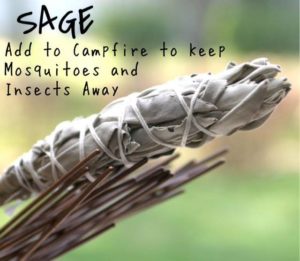


 Mothballs
Mothballs
The Minimalism of Tea
Tea is an act complete in its simplicity.
When I drink tea, there is only me and the tea.
The rest of the world dissolves.
There are no worries about the future.
No dwelling on past mistakes.
Tea is simple loose-leaf tea, hot pure water, a cup.
I inhale the scent, tiny delicate pieces of the tea floating above the cup.
I drink the tea, the essence of the leaves becoming a part of me.
I am informed by the tea, changed.
This is the act of life, in one pure moment, and in this act the truth of the world suddenly becomes revealed: all the complexity, pain, drama of life is a pretense, invented in our minds for no good purpose.
There is only the tea, and me, converging.
—
Thich Nhat Hanh: Tea Ceremony
Basil Leaf Tea is good for the lungs and diseases of the kidneys and bladder. It relieves cramps, vomiting, constipation, and even bad breath. Studies have also shown it can help relieve indigestion.
Bay Leaf Tea is excellent for the digestion and is an astringent as well.
Bergamot Tea is favored as a remedy for sore throats and chest complaints.
Borage Tea is used as a heart tonic, as a stimulant for the adrenal glands and as a purifier to the system. The tea is known for giving a “lift” after a hard day!
Caraway Seed Tea has digestive and cleansing properties and is helpful in clearing the complexion. Crush the seeds slightly before pouring on boiling water.
Catnip Tea has long been used to alleviate colic in babies.
Chamomile Flower Tea is good for menstrual pain and nervous tension and reported to improve ones disposition. The tea taken after a hot bath before going to bed with a few drops of lavender oil will help to induce sound natural sleep.
Chive Tea made from chopped fresh chives is said to lower blood pressure, is a source of calcium and helps to strengthen nails and teeth.
Comfrey Tea is used to heal injuries and broken bones, hence its common name of “knitbone”. It contains large amounts of calcium and B12. It helps in the formation of strong teeth and bones, helps the circulation and cleanses the bloodstream.
Coriander Seed Tea has been used traditionally for purifying the blood thus clearing the complexion.
Cress Tea is a blood purifier, is rich in vitamins and minerals, contains sulfur, iron, iodine and phosphorus, and is excellent for clearing the complexion and brightening the eyes. Apart from making one more robust, it is said to help prevent hair from falling out. Combines well with parsley.
Dill Seed Tea is good for soothing colic in babies and helps the digestion.
Black Elder Tea is made from the flowers is an old remedy for influenza.
Fennel Seed Tea is excellent for bathing sore eyes, relieves indigestion and helps to rid the body of uncomfortable gases.
Bronze Fennel Tea helps stimulate the appetite and promotes good digestion! 1 tsp. crushed bronze fennel seeds and 1 cup boiling water (milk may be used but just bring to a simmer)
Hibiscus sabdariffa Another common type of herbal tea shows promise in regulating blood pressure. In human clinical studies at Tufts, tea brewed from flowers of the tropical roselle plant, Hibiscus sabdariffa, lowered the blood pressure of research subjects. Three cups daily of this hibiscus tea lowered both systolic and diastolic blood pressures over a course of 6 weeks.
Lemon Grass Tea is rich in vitamin A and has the effect of clearing the skin and refining its texture.
Lime Flower Tea calms the nerves and sooths the mucous linings following a head cold.
Lovage Leaf Tea stimulates the digestive organs. A tea made from the seeds is recommended as a gargle for infections of the mouth and throat.
Marjoram and Oregano Leaf Tea is helpful at the onset of a fever, relieves colds, cramps, and stomach pains. A strong tea of the leaves, cooled and used as a final rinse will help darken the hair of brunettes.
Mint Leaf Tea will disperse congestion in the body and relieve indigestion, bronchitis, and headaches.
Nettle Leaf Tea contains vitamin D, iron, and calcium and is used as a spring tonic for the blood. It is taken in case of arterial degeneration, rheumatism, gout, and shortness of breath. The leaves fresh or dried make a delicious nutritious soup.
Parsley Leaf Tea is a very nutritious tea containing A, B, C, iron, potassium, silicon, magnesium and other trace elements. The tea assists the bladder, kidneys, and liver and is excellent for anemia.
Raspberry Leaf Tea has the reputation for easing childbirth and the expulsion of the afterbirth, and assisting lactation. It is soothing, tones up the mucous membranes, allays nausea, and encourages good bowel action.
Rose Hip Tea is popular as a preventative against colds. It is an excellent source of vitamin C, A, E, and B. Hibiscus flowers are often blended with it for fragrant enjoyment.
Rosemary Leaf Tea is recommended for strengthening the memory and relieving headaches. It is a nerve tonic as well.
Sage Leaf Tea promotes longevity, strengthens the memory, and restores acuteness to the senses. It has a tonic effect on the liver, brain, and nerves. It is an excellent tea blended with lemon balm. The tea makes a soothing mouth rinse for inflamed gums and helpful as a mouth rinse for sore throats.
Savory Leaf Tea is used to treat colic, flatulence and respiratory problems. It is an intestinal antiseptic and said to be an aphrodisiac.
Tarragon Leaf Tea helps to rid the body of excess fluids and aids indigestion and flatulence.
Thyme Leaf Tea tones up the nervous system and respiratory organs.
Valerian Root Tea has remarkable sedative properties, relieves migraine and heart palpitations. It should be taken before going to bed. Some herbalists advise that this tea should not be taken by people suffering from liver complaints as it can cause nausea. It has the reputation of an unpleasant smell so mix with lemon grass or add honey or fruit juice.
Yarrow Tea – Cut the stems and flowers from a yarrow plant. Place them in a food processor, and process until the entire plant is well diced (not juicy). Spread the diced herb onto a tray
in the sun and leave to dry for 2-3 days. You can speed up the process with a food dehydrator. Once dry, steep one tablespoon of yarrow in boiling water for 5-10 minutes. It is recommended not to consume more than 3 cups of yarrow tea in one day.
Yarrow Tea dates back to the ancient Greeks. It is mentioned in the story of Achilles in Greek mythology, hence its name Achillea Millefolium. Achilles is said to have used Yarrow to protect himself and his soldiers. Millefolium means “of a thousand leaves.” This refers to the fine, delicate and feathery leaves of the plant.
Native American tribes used it for bleeding, and for wounds, and infections. It is used today in Ayurvedic traditions, and traditional Chinese medicine credits the herb with the ability to affect the spleen, liver, kidney, and bladder. Yarrow tea is currently used to help stimulate the appetite, fight fevers and colds, combats gastric and digestion issues, and protects the gallbladder.
Ways to Use Tea Leaves
Ground Tea leaves
Grind tea leaves before adding to a recipe. You can use a pepper mill, coffee grinder or spice grinder to do the trick. Adding ground tea leaves to baked goods is an easy place to start. Muffins, cookies, cakes, breads and scones pair with tea flavors well.
Combine ground tealeaves with fresh herbs or spices to create a tasty rub for beef, pork, poultry, fish, tofu and tempeh. Let the flavors soak overnight for best results. You can combine tea leaves with vinegar- or oil-based marinades.
Mix tea leaves with breadcrumbs for a tasty topping added right before cooking.
Sprinkle tealeaves into stir-fries while cooking. Green tea leaves pair particularly well! Merge your greens: add green tea leaves to leafy greens when cooking. A sprinkling of green tea enhances the fresh earthy flavors of kale, chard, and spinach.
Brewed Tea
Cook rice with tea for added flavor. Jasmine tea creates delicious jasmine rice, which pairs well with many Asian dishes.
Add citrus-flavored white teas to poached salmon and other fish for a tender, exotic flavor. Teas are great for poaching fruit: pears, apples, peaches and plums.
Add brewed tea to soups and stews.
Add brewed tea to gelatin and eat for joint health.
Tea Bags
Cooking stock or broth? Steep a few bags of mild white tea in your pot before using in the recipe to add a touch of flavor.
Steep a tea bag in melted butter for a few minutes. Try sweeter teas for butters bound for baked goods like breakfast muffins. Use bolder teas for butters bound for vegetables and grains.
Rooibos tisane (herbal tea), or Red Bush Tea is a dried shrub from South Africa. Pronounced “Roy-Boss”, this herbal tisane is caffeine free and has been used for centuries by the natives of South Africa for a host of ailments. The Tea comes in two versions, green and red. Green is the more natural version, but it is more labor intensive and more expensive and has a more earthy taste then its red counterpart. The red version is produced by laying the green shrubs on the mountainside to “ferment” or oxidize. The sun dries it and changes it to the red color.
Rooibos is high in antioxidants, minerals, quercetin(which helps with allergies and may fight off cancer cells), can increases your SOD (superoxide dismutase) levels, and can be used to treat eczema and acne. Some of its many health benefits include:
1. May lower blood pressure,
2. May offer cardiovascular protection
3. Acts as a bronchodilator
4. Prevents DNA damage
5. Acts as an anti spasmodic
6. Used to treat colic in babies
7. Used to reduce stress levels
8. Research has shown Rooibos to be anti-mutagenic, anti-carcinogenic, anti-inflammatory & anti-viral. The best thing about Rooibos is the taste. It has a slightly sweet, yet earthy taste.
Turmeric Tea
4 cups of water
2 teaspoons of turmeric powder
Lemon or honey (optional)
Stevia for taste (optional)
Bring 4 cups of water to a boil. Add turmeric powder and simmer 10 minutes. Strain. Add lemon/ honey or stevia to sweeten it up. Save remaining tea in fridge to drink later

Spicy Mint Tea
This tea combines two common garden herbs that are hard to find at loose herb suppliers. In this nice warming beverage, apple mint helps soothe sore throats and colds. Infuse 1 tsp to 1 tbsp per cup for 15 min.
1 part bee balm
1 part apple mint or spearmint
May your dreams be sweet, your heart at peace and your spirit continue to heal as you walk on your spiritual path. Blessings
Healing Lemon Honey Tea
1 lemon, sliced
2 ginger slices
1 cup or more of local, raw honey
1 12-16 oz glass jar
Slice a lemon and place in a glass jar with the ginger slices and cover in honey. Place in refrigerator for a week to marinate. When ready to drink, boil 8 oz of water and add one tablespoon of honey lemon tea mix to the boiling water. Stir and enjoy.
The tea’s hot steam and liquid help clear your head, the lemon clears mucus while giving you some vitamin C and the antiviral, antibacterial honey soothes your throat.
This mixture will keep in your refrigerator for months.

3 Health Benefits of Drinking Tea:
1. Tea contains antioxidants. Like the Rust-Oleum paint that keeps your outdoor furniture from rusting, tea’s antioxidants protect your body from the ravages of aging and the effects of pollution.
2. Tea has less caffeine than coffee. Coffee usually has two to three times the caffeine of tea (unless you’re a fan of Morning Thunder, which combines caffeine with mate, an herb that acts like caffeine in our body). An eight-ounce cup of coffee contains around 135 mg caffeine; tea contains only 30 to 40 mg per cup. If drinking coffee gives you the jitters, causes indigestion or headaches or interferes with sleep — switch to tea.
3. Tea may reduce your risk of heart attack and stroke. Unwanted blood clots formed from cholesterol and blood platelets cause heart attack and stroke. Drinking tea may help keep your arteries smooth and clog-free, the same way a drain keeps your bathroom pipes clear. A 5.6-year study from the Netherlands found a 70 percent lower risk of fatal heart attack in people who drank at least two to three cups of black tea daily compared to non-tea drinkers.
When brewing and picking out the safest tea remember these tips:
1. Choose an organic & non-GMO certified brand of tea. (My favorites are Numi, Traditional Medicinals, and Rishi Tea (loose leaf)).
2. Check the ingredient list on the back of the tea package to make sure there are no added flavors, GMO ingredients like soy lecithin and corn starch added to the tea leaves.
3. Make sure the brand you buy uses a safe form of packaging material or buy loose leaf tea and use a stainless steel or glass tea strainer. Have the company verify that bags do not contain epichlorophydrin, and avoid plastic tea bags all together. (Numi and Traditional Medicinals are some of the only brands I trust in this category because they have publicly stated they do not use this harmful ingredient or GMO packaging and are Non-GMO Project verified.)
4. The majority of restaurants use some of the most pesticide ridden tea and brands that have harmful packaging like Celestial Seasonings, Lipton, Bigelow, etc. Don’t fall victim to this. Bring your own tea when eating out or going to restaurants and ask for pot or cup of boiling water. If you drink iced tea, brew your own at home and carry an insulated water bottle with you.



Bath Herb Blends: A fragrant herbal bath is a reliable refuge from the turmoil of everyday life. Gently mix the ingredients in a large bowl and store in a jar or basket. Add 1/4 cup oatmeal for dry skin or 1/4 cup cornmeal for oily skin before simmering for extra scrubbing action. To use: place 1/4 cup oF the blend in a small cotton bag and simmer in a glass pot over medium heat with 1 quart water for 10 minutes to make a tea. Pour the tea with the bag into the bath water. Hop in and relax. Use the bag to scrub with. Discard herbs when finished and save the bag for future use.
Recline and Relax Bath Blend: For when you have nowhere to go and you need a stress reducing soak in the tub! ( makes 16 applications)1 cup chamomile flowers, 1 cup lavender buds, 1 cup lemon verbena, 1 cup strawberry leaves
Romantic Bath Blend: A calming, but energizing blend that leaves your skin scented. (makes 12 applications)
1 cup rose petals, 1 cup rose geranium, 1/2 cup lemon balm, 1/2 cup chamomile
Sparkling Start Bath Blend: A refreshing and stimulating blend. Makes 12 applications. 1 cup rosemary, 1 cup peppermint leaves, 1/2 cup lavender buds, 1/2 cup sage, 1/4 lemon peel

Camomile
Herbs for the Skin
Fresh and dried herbs used to make infusions with medical properties–applied externally or used with compresses–have been in use for thousands of years. Why would we choose to use chemicals on our skin when these lovely botanicals can be just as effective? These are the principal herbs recommended for use in herbal infusions. Several of them have cleansing and toning qualities that make them useful in any long-term natural skin-care program; all are suitable for any type of skin.
Calendula. Use healing calendula alone or in a half-and-half mix with lavender or chamomile for its anti-fungal, anti-inflammatory, and antiseptic capabilities.
Chamomile Flower. Anti-fungal, soothing and cleansing, chamomile flower is the best way to reduce frequent inflammation. The infusion is especially recommended for the fragile skin around the eyes.
Elder Flower. A gentle cleanser, toner, and astringent, elder flower may also be used to reduce inflammation.
Lavender Flower. Though slightly drying, lavender soothes, reduces inflammation and cleanses.
Lime (or Linden) Flower. Similar to chamomile, lime flower is very calming. Its mildly toning, anti-inflammatory effect is beneficial for aging skin.
Mallow. Gentle anti-inflammatory properties make mallow a wonderful way to soothe and calm irritated skin.
Mint. Use to tone the skin.
Rosemary. Antiseptic, toning and vitalizing, rosemary improves blood circulation in the capillaries. Use alone or in a half-and-half mix with yarrow for a more astringent effect.
Thyme. A strong anti-bacterial herb, thyme is effective as a skin wash for acne or infected eczema. Use alone or in equal parts with chamomile and/or calendula to soothe and heal.
Yarrow. Particularly good for aging or damaged skin, yarrow is recognized as a toner, stringent and antiseptic.
To Make a Simple Infusion
Use one generous tablespoon of dried chopped herbs or petals to 9 fluid ounces (250 ml) of boiling water. Place the herbs in a mug and fill it to the brim with water. Infuse for 10 minutes, strain, reserve the liquid, and allow to cool before using. Apply with cotton pads or in a mister and leave to dry naturally.
Storage
An infusion only has a shelf life of about 12 hours, so don’t be tempted to bottle large quantities. However, you can freeze a strained and cooled infusion in an ice-cube tray and keep it in your freezer for up to three months. To use, simple rub a cube directly on your face, neck and arms for a cooling and hydrating effect. This also has a toning action because it quickens the blood circulation in the capillaries of the dermis.
1. Lavender Oil Recipes: Tools: Large Jar, Cheese cloth or muslin, large bottle Ingredients: Enough dried herbs to fill the jar and enough oil to completely cover the herbs.
Place the herbs in the jar. Make sure they are completely dry. Any water in the herbs can make the infusion turn rancid. Pour oil over the herbs until it completely covers the herbs. Set in a sunny spot for 2 to 6 weeks. The heat from the sun is going to release the plant constituents into the oil. Once infused, pour the mixture through the cheesecloth and pour the oil into a bottle.
2. Lavender Oil : Fill a jar with lavender stems with leaves and flowers that have been lightly crushed. Pour almond or olive oil on top and allow steeping for a month. Gently shake the jar daily to ensure that the lavender and oil mix well. After a month, strain the mixture and put in a covered jar.
3. Lavender Oil: Place the herbs into a crock pot. For each half a cup of herbs add one full cup of your preferred oil. Simmer on low for 2 to 3 hours. Cool it and “squeeze” the oil through cheesecloth.
Lavender Skin Toner – Steep lavender in Witch Hazel for a wonderful skin toner.
Coconut Milk Shampoo
1/4 cup coconut milk
1/3 cup liquid Castle Soap
1 tsp vitamin E, olive or almond oil
10 to 20 drops essential oils of your choice
Combine all ingredients in a glass jar and shake well to mix. Store it in the shower for up to one month. Shake before each use.
Banana Honey Oat Mask
1 banana
1 Tb honey
1/3 cup oats
Blend all ingredients together until you have a thick and smooth consistency to spread on your skin. Wash face with warm water, and then cover it with your mask. Leave it for 10-15 minutes. Gently rinse your face in warm water and pat dry with a towel.
Pore Strips
1 Tbsp unflavored Gelatin
2 Tbsp milk
Measure gelatin into a disposable container. Quickly add milk to the container until you have a chunky consistency. Add more milk if you’re uncomfortable with the volume of chunk. Microwave your mixture for about 10-15 seconds. It will become creamier in the microwave. Stir that around and start applying it IMMEDIATELY to your face. Act quickly because the mixture solidifies very fast. Let it dry for about 15 minutes.
Peel off the crusted mixture until it’s entire removed. Rinse your face with cool water.
Lip Gloss
Solid vegetable shortening
Honey
Unsweetened powdered drink mix (i.e. Kool-Aid)
Hot water
In a small bowl, mix 1 Tbsp of the vegetable shortening and 1 tsp of honey.
In a separate bowl, mix the drink mix and 1/4 tsp hot water until it has dissolved. Stir in as much of the drink mix as possible. The more you can dissolve, the stronger the flavor will be. Add one drop of the water mixture to the shortening/honey base. Stir well. Repeat until you get the color/flavor combination you want. Pour into a clean container or old lip gloss pot (I recycle Altoid tins for this purpose) Store in the refrigerator. This will keep for one week.
Peppermint Deodorant
6 Tbsp unrefined coconut oil
1/4 C. arrowroot starch
1/4 C. baking soda
4 capsules Vitamin E oil
20 drops peppermint oil
In a double boiler or in the microwave, soften the coconut oil. Mix everything together until smooth. Transfer mixture to a glass jar. If it becomes too soft in warmer weather, store in the refrigerator. Apply a small amount under each arm with your fingertips and gently rub in.
Honey Cuticle Cream
1.5 oz beeswax
3 oz olive oil
1 Tbsp honey
In a double boiler, melt the wax and oil together. Stir in the honey, and pour into tins or other containers.
Oats & Honey Exfoliant
1 Tbsp honey
2 Tbsp ground rolled oats
1/2 tsp apple cider vinegar
In a grinder or food processor, grind oats until it has almost become flour. With a fork, mix in the honey and apple cider vinegar until smooth. Wet your face. In circular motions, gently apply a small amount of the scrub. Leave on for 10-15 min. Rinse off with warm water, and moisturize.
Vanilla Cream Massage Oil Lotion Bar
3 Tbsp Shea Butter
1 Tbsp Cocoa Butter, grated
2 Tbsp Virgin Coconut oil
2 Tbsp Sweet Almond oil
1/4 tsp Vitamin E (1 capsule)
1 tsp confectioners sugar
6 drops Vanilla Essential Oil
In a double boiler, mix Shea and Cocoa butters over low heat until melted. Stir in the almond oil. Remove from heat. Drop in the vanilla essential oil and whisk briskly to incorporate it into the liquid. Whisk in the Vitamin E and sugar. Pour the hot massage oil lotion into ice cube molds or muffin tray. Let cool. Once they’re cool all the way through, remove them from the molds store them in a glass jar until ready to use.
Strawberry Foot Cream
2 oz glycerin
1/2 oz corn syrup
1/2 tsp strawberry extract
Combine glycerin with corn syrup, and stir. Mix in extract. Continue stirring until well blended. Transfer to a small glass jar, and rub into your feet as needed.

Herbal Teas for stress and anxiety.
Teas of chamomile, basil, marjoram, or rosemary help ease stress. Use about 1 ounce fresh herbs (half of that if dried) for every 2 to 3 cups water.
A tea of elderberry flowers is considered relaxing to the nerves and is sleep inducing, too. (Caution! Avoid if pregnant.)
For insomnia, drink bee balm, which acts as a mild sedative, calming the nerves and aiding sleep. Take an infusion of 2 teaspoons chopped leaves in 1 cup boiling water.
Drink rosemary tea to alleviate melancholy or depression.
Native American tea ingredients for insomnia included lady’s slipper (decocted), yarrow, mullein, hops, and purslane (decocted).
Valerian tea (or capsules) is a natural sleep aide. In infusions, 1 ounce of the roots in 1 pint boiling water is a common recipe, consumed by wineglass as needed. (Caution: Too high a dose may lead to negative side effects!)
Tea for Depression
1 tsp St John’s Wort
1 tsp Gingko Biloba
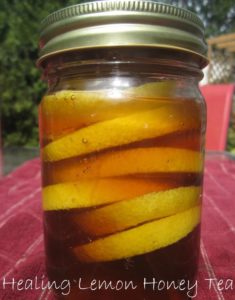 Healing Lemon Honey Tea
Healing Lemon Honey Tea
1 lemon, sliced
2 ginger slices
1 cup or more of local, raw honey
1 12-16 oz glass jar
Slice a lemon and place in a glass jar with the ginger slices and cover in honey. Place in refrigerator for a week to marinate. When ready to drink, boil 8 oz of water and add one tablespoon of honey lemon tea mix to the boiling water. Stir and enjoy. The tea’s hot steam and liquid help clear your head, the lemon clears mucus while giving you some vitamin C and the antiviral, antibacterial honey soothes your throat. This mixture will keep in your refrigerator for months.

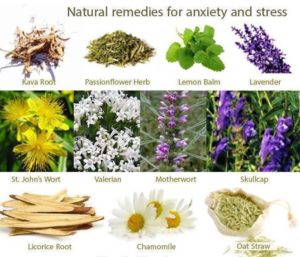
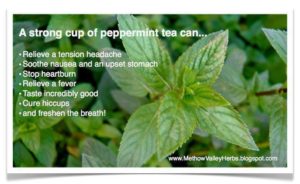




Rhodiola, also called “golden root” — is used mostly to treat stress, depression and fatigue, and is also believed to increase mental performance. Its popularity is growing, in large part because of what an incredibly versatile and relatively inexpensive herb it is.
 Holy Basil comes from the lowlands of India. It’s called “holy” because it is believed by Hindus to be the avatar for the goddess Lakshmi, the goddess of wealthy, wisdom, and light. Holy Basil has a wide variety of uses, stemming back thousands of years. Within the tradition of Ayurvedic medicine, it is used to alleviate stress, headaches, colds, digestive problems and inflammation. Recent studies have also shown that it’s also a powerful antioxidant and may even be able to reduce blood glucose levels and cholesterol.
Holy Basil comes from the lowlands of India. It’s called “holy” because it is believed by Hindus to be the avatar for the goddess Lakshmi, the goddess of wealthy, wisdom, and light. Holy Basil has a wide variety of uses, stemming back thousands of years. Within the tradition of Ayurvedic medicine, it is used to alleviate stress, headaches, colds, digestive problems and inflammation. Recent studies have also shown that it’s also a powerful antioxidant and may even be able to reduce blood glucose levels and cholesterol.

Ashwagandha is one of the premier restorative herbs in Ayurvedic medicine. It helps stabilize mood and supports optimal physical and emotional well-being. It is known to improve memory, focus and endurance and is believed to reduce the effects of stress on the body.

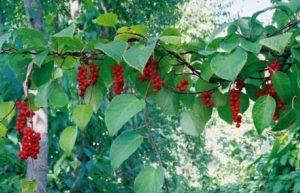 Schizandra berries promote liver function, support the immune system, relieve anxiety, increase energy, and can improve mental clarity. It’s sometimes called the “five flavors berry,” because it tastes sour, bitter, sweet, salty and acrid all at once.
Schizandra berries promote liver function, support the immune system, relieve anxiety, increase energy, and can improve mental clarity. It’s sometimes called the “five flavors berry,” because it tastes sour, bitter, sweet, salty and acrid all at once.
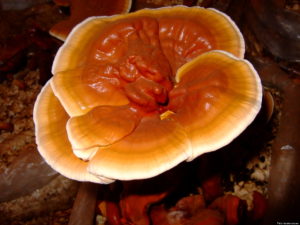
Reishi Mushroom is used to “calm the spirit.” Reishi, (literally “supernatural” mushrooms) have been used for more than 2,000 years, making them perhaps the oldest mushroom to be used medicinally. They can be helpful to reduce anxiety, alleviate insomnia, combat fatigue, and lower blood pressure.